With film usage and adoption on the rise, we wanted to resurrect the debate of digital photos versus analog photos. As a film processing lab we obviously have a bias, so not going to say which is better, but just to present the differences and list advantages.
While in Eastern Sierra Nevada we shot two photos, one film and the other digital. Both the digital photo and the film photo were taken with the same settings. The left image was captured on Velvia 50, taken with a Canon EOS 3, a 50mm lens at f/4. The photo on the right was taken with a full frame Canon 6D with 50mm, 100 iso and f/4. Both images are unedited. As you can see, Velvia 50 has very fine grain and has rich vibrant colors straight from the scan compared to the unedited JPEG from the Canon 6D. And yes, you do have the option to edit digital photos but there’s something special about making a beautiful image in-camera on film and not having to spend any time editing!
Also, if you’re looking for a little less saturation, there are other great film choices, like Provia 100 which isn’t as saturated but still has great color and fine grain or you could go with a color negative film which will give you more subtle colors and has a wider range of exposure latitude.

Film Photography Advantages
- Lower initial cost than for a comparable digital camera
- With a higher dynamic range, film is better at capturing details in whites and blacks and can’t be replicated with digital cameras. Also film can capture subtle details lost in digital photography
- Film is more forgiving of minor focusing issues and exposure problems
- Film captures photos at higher resolution than most digital cameras
- Analog film can be pushed or pulled multiple stops when needed, but the amount of contrast within the image is affected. Some photographers use this to their advantage to create the ideal look they desire, but this method still does not allow extremely high ISO speeds without impacting image tones.
- Film photographers with a limited number of exposures available on a roll of film must think more about their images before shooting them. Digital photographers tend to take pictures first and think later. Depending on your viewpoint, this is either an advantage or disadvantage.
- Unlike digital cameras, film cameras are future proof and don’t become obsolete.
- No power or batteries needed. Long trips and cold conditions can be limiting for digital cameras.
- The Darkroom photo lab scans your film photos, now allowing you to edit your images on a computer with photo-editing software or share in social media.
Digital Photography Advantages
- The resolution in even point-and-shoot cameras, which is often 12 to 20 megapixels is high enough resolution for large prints.
- Digital cameras also have the advantage of being able to change film speeds between individual photographs.
- The cameras are generally lighter weight than film cameras.
- Memory cards are tiny and can store many images.
- Instant gratification and images can be viewed immediately. Some film photographers consider this a disadvantage.
- You can edit your images directly on the camera.
- You can choose to print only the images you like best.
- Many cameras offer built-in filters.
We’d love to hear your thoughts on this topic in the comments below.

This was originally posted on our Instagram (instagram.com/thedarkroomlab).
Below is some of the comments from that post.
velorydr Cool, thanks for the comparison! It would be interesting to see how true Velvia film would hold up against an in-body Fujifilm digital simulation, or VSCO simulation. Keep up the good work!
koribrus The same thing sold me after 1roll. I still shoot both, but the bigger love is with film.
ben_holiday Shooting jpg without a raw option is just sad ? and holds no candle to velvia or any film. That being said a raw file in the right hands can be a very different story. Film and digital are tools there is a tool for every type of job, in the end it’s all about how they are used and the skill of the user.
barce I hate feeling broke after shooting with film. Yeah, I did a similar experiment with a raw Canon T3i and Velvia which did a great job of catching very subtle highlights. Film you can over expose to get details but digital you have to do the opposite. Right now digital to print is way less hassle. If I had to photograph in Antarctica I’d stick with film. No digital camera’s battery can stand the cold (-20C/F). That’s the only job I see for film these days.
__mason thank you for this great comparison! I’ve been shooting film for years, & when I tried going out with a digital camera a few times I just couldn’t get near the results I was used to without time at a computer. granted I’m no photoshop expert. but man there really is nothing better than composing a photo, developing it & loving it as is. there’s a lack of satisfaction & emotion in knowing I need to re-work all of my digital images to get the right colors & mood. I’m sure a lot of people love that aspect, but I’ll forever prefer letting the magic happen then & there, with light simply making its way to a piece of film.



 My Account
My Account

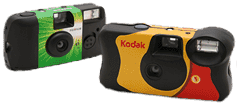
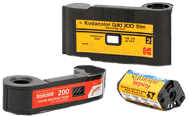
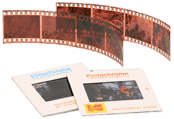
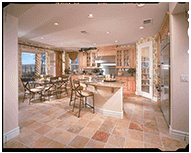
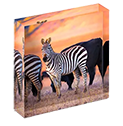
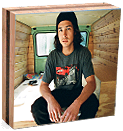
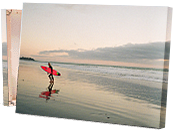
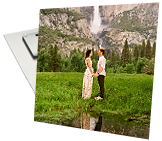
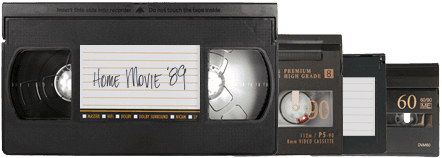
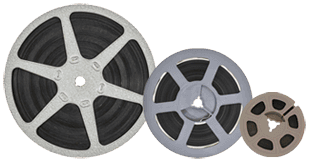
 Gift Cards
Gift Cards Film Index
Film Index FAQ
FAQ
Although I carry around a primo Leica digital I still tend to go to my trusty mechanical Spotmatic or F1 for my “money shots”. With 24 exposures, film holds me to a strct line of creative and judgemental discipline as to “the decisive moment” (Bresson), composition, f-stops, shutter speed, color management, and so forth. With digital I have an unfortunate tendency to “shoot it first and fix it later” via Photoshop. I also have a closer feeling of a hands-on connection with film than electronic digital much like driving a 350 Camaro with 4-on-the-floor as opposed to an automatic. The automatic will get you to where you’re going but you’ll have a heck of a lot more fun getting there with the 4-speed. Ansel Adams made an astute observation : “I am a fly-fisherman, I don’t drop a stick of dynamite into the creek”. So, what was good enough for him and Bresson I guess is good enough for me. Nuf said.
My general rule is color digital, B&W film. Nothing compares to printing from a B&W neg and watching an image appear by magic. I currently use 35mm but I am looking into a good used medium format film camera. However when I travel however I only take my DSLM because of size and weight with a small P&S as backup. There is only so much you can get in a carry on.
For me, it’s the color or in the case of B&W the detail and fine tones you get from film. You can’t reproduce with digital filters what you can get from quality film or slides and I love to shoot 120 roll film in medium format with a negative that is 400% larger than “full frame” digital cameras. The exposure latitude of negative film is one huge advantage film offers that I love. A lot of digital looks cartoonish with HDR or has blown out highlights.
How are all of your great photos from 2003 doing right now? Unless you are a very disciplined archivist you probably don’t have them. Most digital photos never get printed, while negatives or slides can last more than a lifetime. In the last year, I’ve found family pictures & negatives that were taken before WWII, try that with digital.
I own 8 film slr cameras, 2 Konica, 4 Minolta, 2 Pentax and also use a Fuji digital camera. I feel the difference between the modern digital slr’s and the ones’ made in the 60’s and 70’s are the standard lenses that come with the camera when you purchase it. I have thousands of b&w negs and slides which are crystal clear and beautiful, even after storage these many years. I attribute the quality of these photos to the excellent lenses made years ago and also to the great work done by the processing firm. Just received some “experimental” photos I recently took with my old Minolta . Although my pictures are nothing to brag about, your processing made them look a whole lot better than any I have taken with my digital camera. Kudos to “The Darkroom”.
Film will always be much better. use film.
Everything else aside; the hours in my dads basement darkroom running the enlarger and working with him are priceless to me; I wish we had done more before he passed. Can still smell the chemicals. Can’t do that with digital.
It’s an argument that can’t be won with logic, and it’s so individual anyway. Here’s why I shoot film, tho:
1. I like the fussiness and struggle. It’s fun to think and fiddle, to calculate EV without a meter, or to whip out the meter and read it like a little robot. The analog ones, the digitals–they’re all fun.
2. All of my imperfect photographs remind me of old timey photos–either ancient family photos, or photos from long ago . My new imperfect ones make me feel part of the gang.
3. When I make a good one, it’s soooo satisfying, and part of that comes from knowing the camera facilitated it, of course, but didn’t take over and do it for me.
4. I LIKE having to commit my next 10 or 12 or 36 photos to one ISO. I enjoy the stress of “125 or 400? How about 3200? What about pushing 400 to 800 or 1600? Or should I pull 3200 to 1200?” My god, this is what being alive is all about! Then you pick one and go with it and make the most of it.
4. Call me easy to please, but I find even failed or lackluster sincere attempts in black and white to be artistic, or at least soothing to look at. When the image doesn’t live up to the reality, imagination kicks in. This is never the case with perfectly exposed, razor-sharp lollilpop-colored images created in megapixels (which are not, technically, photographs).
5. Film cameras look so cool. Especially the squared-off ones from the pre-ergonomic plastic days. Today’s cars all look the same because they were all designed by wind-tunnel tests…and today’s cameras were all designed by the weak, soft hand that must have it all and squawks at edge or the texture of vulcanite.
6. I am not a pro or a wedding photographer. All of my photos are optionals and luxuries. Photography sucks money out of my pocket, doesn’t stuff it with it, and that is a wonderful thing, because it means nothing is at stake if I muff a shot or a whole roll. No bride’s mom will sue me.
7. Last one: Too bad the iconic names have swerved so much or even entirely away from film to digital. I’m not trying to change your definitions or win people over to my side, but to me, for me, in MY opinion, there is a difference between photography and image capturing, and there is a difference between a camera that makes photographs and a computer made by a former camera company that captures images.
8. FILMO ! FILMO! FILMO!
Great contribution Grant!
Amazingly ignorant comparison. Dynamic range of film is several stops less than modern digital. Film results strongly depend on development process and non-reversible. Set your digital camera to “Vivid” mode and you will have equally bright picture in JPG. Digital sensitivity is higher. Flexibility of digital image manipulation is infinite (4K focus stacking, HDR, etc.etc.). Resolution of 20 MP digital is higher than scanned film. Film is totally obsolete. It is like a stone ax vs. chainsaw.
Terrific article Trevor! I guess I get a bit frustrated with “digital” photographers always in the debate of why digital is so much better than film. I have been shooting both film and digital for over 30 years, and more recently trying my best to leave digital and going solely to film. For me, it’s not about the megapixel count, the “satisfaction immediacy” or the ability to quickly change the sky in editing if you don’t like it…it’s about slowing down…and being 100% in control of producing the image, leaving electronics to the wayside. I have left a link to a blog I recently wrote entitled “Technology has killed the true spirit of photography” which I believe you will get. Looking forward to future articles! Best, James
.
I just like film. I have 3 Minolta X-700 (manual focus). Some of them have the multi function back, and I have anything from Vivitar to a Zeiss lenses. I met a person last year who called my camera a dinosaur. I just smiled at him and said “It’s a living dinosaur”. The fact that the Dark Room will push film. Has expanded were I can use my film camera. I recently went to a black light party, and I had to push my 800 film to 1600-3200. I think the challenge of taking the picture with a fully manual camera makes the picture more memorable. Normally, I only shot two to three rolls in a day. With a digital camera, you will shoot over 200 shots by lunch and hardy remember any of them. Please note most of my photos are for fun, and not for profit. Next time you get out your digital camera, pick out and non-zoom lens and set your ASA to 200 , and turn off your AF, and don’t change anything but the f-stop and the shutter speed (1/1000 max). {Bet you will not last more that 5 minutes}. When I finish a photo shoot, I’m done. I do not need to spend the next 4 hours converting and correcting. There is a point in photo shop. Where you become a image-ographer and no longer a photographer. But if you are shooting for profit or vacation, you just have to have a digital camera.
I wanted a nicer camera than the cheap point-and-shoot digital camera I have. I couldn’t afford an DSLR camera and lenses. So I found my husband’s Canon EOS 620, with a big telephoto lens attached, and all I had to buy was a battery (2CR5 lithium 6V battery for about $10). Now I am very, very happy. I bought 8 rolls of film and one roll of B&W film. I wonder if I can take a picture for your latest contest in time for the October 30th deadline??? I’m so so happy. I’m glad I found you, to develop my film also.
It is so exciting!
I definitely enjoy the film photography process much more, but it’s quite expensive in 2019 to buy, develop and print film. For that reason, for me it’ll always be supplemental to digital photography. I have quite a collection of old Canon, Nikon, Olympus & Pentax SLR cameras and they’re cool as hell and pleasing to hold, manipulate and operate. But they’re not going to replace my Canon or Sony digital rigs.
Okay, this was very helpful with my paper that I had to do on photography and cameras. Thank you thedarkroom!!!!!!
I still have my good ‘ole workhorse, Minolta. I love using it, even tho I have 2 digitals
Slowing down is not an inherent capability of film. That’s all a matter of photographic discipline. Many film-only photographers seem to lack this discipline.
From a logical standpoint, there is absolutely nothing a film camera does that a digital camera can not do. Nothing. The opening paragraphs of this article used a dishonest comparison. Film requires processing. The image on the left did not spring fully formed from the Canon EOS 3. It was processed in a darkroom. There are dozens of film simulation presets that can reproduce that image from the digital RAW form the Canon 6D. Heck, Fujifilm even makes digital APS-C and medium format cameras that produce Fiji Velvia image right in the camera.
If this article was written as clickbait, yay!, you win. Otherwise, this piece is pointless.
I started shooting professionally in 1998 when digital was just becoming a viable alternative to film. Here’s my opinion on the two:
I LOVED assisting film photographers when I started out. Loading backs, understanding how different film stock’s reacted to different types of light, relying on a light meter, taking detailed notes, pulling Polaroids, delivering dozens of rolls of film to the lab and waiting at the bar next door for clip tests… Maybe more anything else, these processes helped me understand how to plan for the perfect shot while remaining open to unexpected possibilities once on set/location.
By the time I stopped assisting and began shooting in 2003, clients generally expected digital for a few reasons. Digital backs produced beautiful, large images in real time. Clients/art directors could see the results while we shot. Art directors could place a mockup of each photo into their layouts and get client approval before we wrapped up for the day. And budgets no longer included film, processing, clip tests, contact sheets, prints, scans, etc.
One immediate, and unexpected, benefit was – because they saw the images in real time, clients were comfortable once we locked in the planned shots and were much more willing to try a few different things while on set. This allowed them to feel/be more involved and let us shoot things they wouldn’t otherwise be comfortable with. And those last few shots of the day often became the ones they used. That’s a big win for everyone.
In a commercial environment, digital just made sense once the image quality got to a certain point. I did miss the manual process of preparing the film each morning and working with my favorite labs and printers, but it made sense.
Now, I shoot all commercial work with a Canon 5D MarkIV and, for the most part, I love it. I still sketch every shot before shooting. I still take detailed notes. Honestly, the only part of shooting digital I don’t love is organizing/maintaining hard drives, backing up images, and spending more of my day at a computer. Not the end of the world, just not my favorite part of the job.
For personal work, I get my film fix with a Fuji GA645 and a Rollei 6008 Integral. And my iPhone 🙂
When talking about film vs digital, I feel that my favorite part of photography is often overlooked – the experience of meeting new people, traveling to new places, capturing unique images, and creating deep relationships with the talent, clients, and crew. Those things will never change.
Photographer for many, many years starting with a Canon A1, I now have hundreds of thousands of full frame Sony shutter actuations and recently shot an old 120 camera with TMAX bw film. I’d forgotten how much I love film. Now I’m in the market for an old Hasselblad. If you have the skills, it’s not a debate. You use what speaks to you at the time. Digital does not create film images.
I have been photographing for many years.I have a Nikon F6 as well as a Nikon D7100. I love the results from my film camera. I give the DSLR the same opportunities . I Sometimes shoot them side by side, film and digital . I am a slow and methodical shooter, but my F6 with film just looks way better than the DSLR images. This is of course after processing both in photoshop. The DSLR images seem to have much less body to them, the film images seem to be more robust in nature.?? Hard to explain.The DSLR is great for family stuff,weddings, birthdays etc. But for my serious landscape and macro shots I us my F6 with Velvia ,Kodak or Ilford it just can’t be beat. I keep trying but I always get the same results.
I got into photography while living in Iraq back in the 70’s. The only file I could get my hands on was Kodachrome 25, or Kodachrome 64. I took beautiful photos of archaeological sites such as Hatra, Nippur and Babylon. When looking at the photos of Nineveh and Hatra, tears well up in my eyes since a lot was destroyed by ISIS.
My first camera was a Canon A1 purchased in 1979. I still have it. It still works. I have a lot more toys, but I could not come up beautiful photos off a DSLR.
I will stick with film.
Best wishes!
I started with photography in mid 70’s. I shoot digital now (Nikon D7000) with all Nikon lenses ranging from fisheye thru 70-500mm and macro prime Nikon 200mm. I post process in PS for many years and the digital bribgs beautiful images. I still hold on to my Nikon F90x tho. Why? I can explain. I shoot b&w of my little kid. I pick my shots carefully. I execute with care. I put the film in fridge and store them for the rest of the year there. I develop them in dark room at Xmas time. I love the surprises , the forgotten moments, the throwback in time. This is what you don’t get with the digital. The surprises, the mood of developing, the ritual of taking photos with a thought and preparation, not taking thousands of shots and scrapping them after. The click with film counts, there is no other click and you only find out if you did it right or not in the red light. Cheers!
Simple argument, if your in business and have many clients shoot digital. If your doing it for personal work shoot film and enjoy the good ol days of analog! 🙂 I just got my pics back from a photographer and half of them are too soft and blury from using analog. I am not happy coz I will never get the detail back! I shoot all digital..and i know I have the shot when its on the back of my screen!
I think that people should stop comparing resolution, the popular Joker Movie was filmed on 35mm and then mastered in 4k. Film gives you a more artistic look, and less worry about settings like white balance, auto focus, raw or jpeg. Film looks good if you know what you are doing right out of the camera. Currently I have been experimenting with 800 ISO Single Use Cameras, if it is too dark increase your lighting. I like not worrying about anything but composition, and not needing batteries, or having to edit photos. Plus the cost of digital to get quality photos cost thousands or at the least hundreds of dollars if you are thrifty. For the year with the cameras and development, I will spend under 400, and can always go to medium format, or large format. Try buying a cheap digital medium format camera, 120 is about 60mm so ten under IMAX standards. I have tried digital so many times Nikon D600 Canon Mark II, and went to school for photography. Digital may look technically correct, or sharper edge definition, or colour rendition. But it is not as artistic, and post editing takes the art out of creation, editing numbers, and values, not air brushes, or toners, or even the film type. Film is coming back in a big way, I would say higher than Vinyl records. “Tune in, Turn on, and Drop Out” – (Dr. Timothy Leary).
I started my photogrphy journey with film and sold my SLR, lenses and tripods after a relatively short period of time. While I was successful in producing nice shots and enjoyed the hobby, the lack of any creative input in the film’s processing frustrated me. It was pre-photoshop, scanning and digital manipulation. The cost of film, cost of processing and zero control over how film was processed just made the hobby inaccessible to me. Many decades later and I’ve revamped my photography interest in digital. It’s world’s away from the analogue mode for me. More creative control in processing, cheap access to great equipment (I use a 7yr old digital camera that’s great with analogue lenses). The whole setup cost me just over $300. I paid that just for my SLR with a 50mm lens back in the day and that was $300 in decades ago money. I paid another $200 for a tripod and another $175 for a second hand telephoto back then. Not to mention my little M10 weighs nothing compared to my OM10 which always felt like a brick around my neck and a pain to carry. I just got a free SLR body thrown in with a vintage lens I just bought and I’m happy to have the option for 35mm film again if I ever get the desire. But I doubt it will become the camera I pick up and throw on my bicycle when I go on my photo safari’s.
Don’t think Michelangelo had a chainsaw when he sculpted “David”
thank you for your answer.
i was using film camera for last49 years. and my observations are same as yours
Very good comparison of a digital and film photo showing what can be achieved straight from the camera.I have owned full frame digital nikon and now an xt2 but have always missed what I got from film back in the day so have just gone back to an F5 mainly for black and white .first of all I had forgotten what a great camera it is even just the feel of it in your hands is great.then there is the matrix metering which is brilliant.so Im trying out all the ilfords first HP5,FP4 and PANF and the rollei 25,100 *,5 400.weather I find myself using the F5 more remains to be seen but it’s great to have the option thesedays .
mmm so good
Does anyone really believes that this comparison I legit the person clearly shoot with a flat picture profile and used a canon 6d which does not have the IQ that other Digital camera have like the d850.
Also the website that is comparing film vs digital is called the darkroom and is selling I shoot film t shirts and develop and scans film so I’m calling B.S on this comparison.
Personally,
I have spent a tons of time in both, and more in digital, and still cannot get the level of darks and details in B&W digital that I can with B&W film. I’m sure it may be able to be done but imho not by many, even with great software and hardware (silver effects pro, lightroom, capture one, mac, wacom, etc) anything less than real high end experts may have trouble or never reach their goals. I am good, very, very good at computers technologies and been in digital for over 10 solid years now. Still cannot get really very near the same in digital B&W I can with B&W film and prints. And the prints, with all the darkroom fuss of chemicals, dodging, burning, etc still only takes like 25% of the time great digital ‘development’ takes. Not to mention that the wet print *will* last 300 years. 🙂 . Still so much of the world is in digital, how can we really avoid it. Converting film, much less prints, to digital so that I have a digital version of what I did, is slow and costly as its not common today. With film I cannot go shoot and within minutes or less give somebody a jpg copy to check out. That ease of use has value. The digital is not as good, but the effect of getting a draft into 20 peoples hands (editors, etc) 20 minutes after shooting it gets a some respect, not to mention high demand. Their values are a dichotomy to me, that neither can be brushed away or solved by the other.
This is an endless debate, and one which will, by definition, divide us into different camps. Still, really, there is no need to get defensive, whichever camp we’re in. Each has it’s own virtues and vices, and it’s down each of us to decide what suits us best. For myself, the satisfaction of seeing the print hanging on the wall is where it’s at, and I guess that’s the fly in the ointment these days. I wonder what the percentage of all “images” captured today that actually end up in print is? Pretty low I would guess. I’m happy to be shooting film, but I’m less concerned with trying to convert anyone to my way of thinking. Let’s all of us be happy with whatever medium we use and celebrate others in their pursuit, whatever form that takes. Happy shooting to you all.
For me, 35mm film connects me to my past. Also, I wanted my young daughter to have a physical photo album. Shooting with a film camera is also very satisfying. I love to hear the clockwork mechanism on slow speeds. Also, yes the images just simply look nicer. I have been suggesting to Google that they include a mechanical shutter sound for their phone camera.